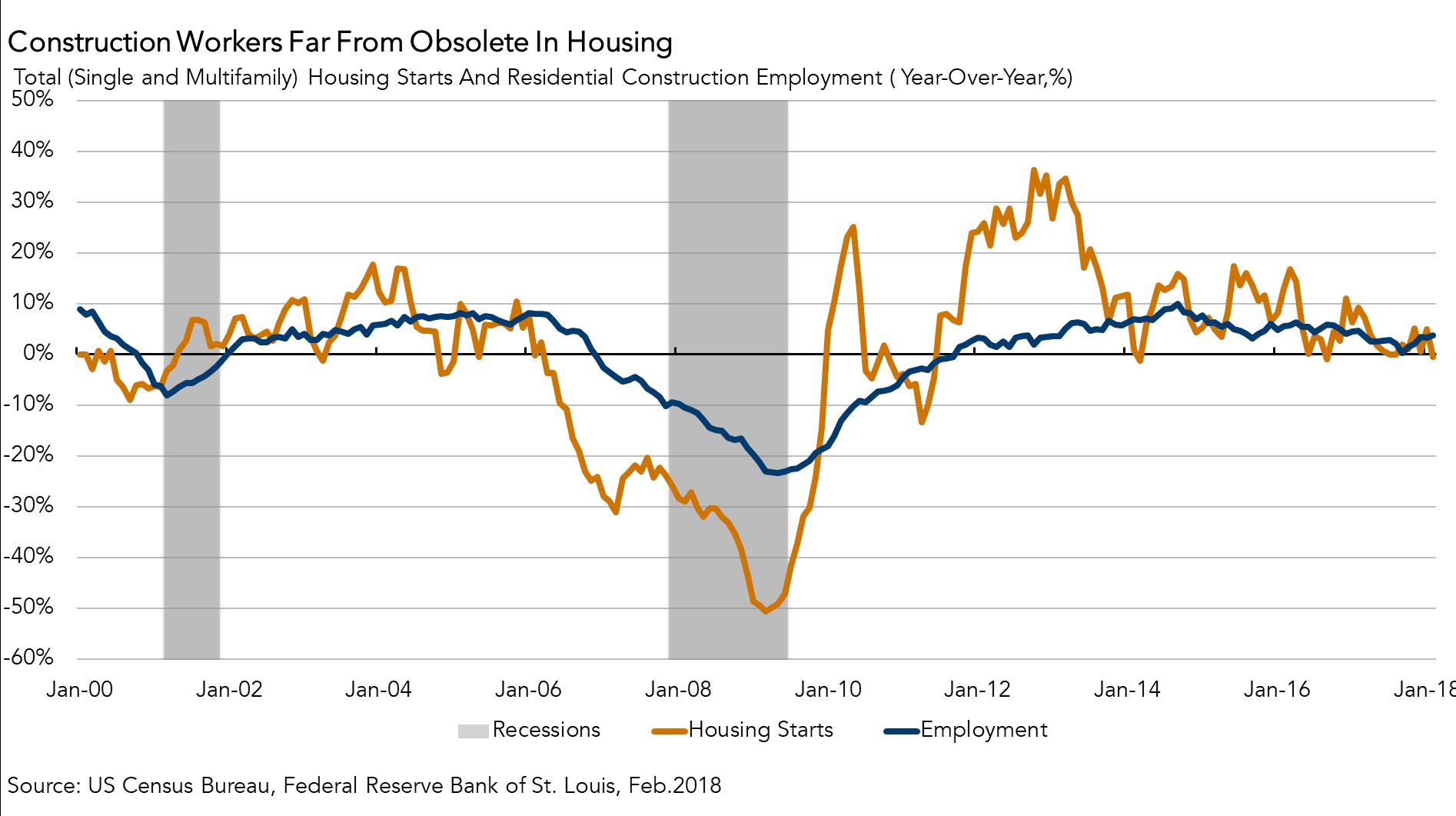While housing starts are down compared to a year ago, today’s Census Bureau report for February sends a positive message to the housing market.
As we analyze today’s housing starts data, it’s important to also consider the impact of construction labor on the velocity of new home construction. The employment situation report, released earlier this month, reported an increase of nearly 7,000 residential construction jobs between January 2018 and February 2018. In fact, February was the best month for residential construction labor growth since August 2008. The number of residential construction jobs is now 3.8 percent higher than a year ago. The growth in residential construction jobs supports further improvement in the pace of home building because building a home does not readily lend itself to outsourcing and automation.
It’s very hard to increase housing starts without increasing residential construction employment and productivity.
Housing starts are the source of future completions, and while builders broke ground on fewer homes overall this month compared with February 2017, it was mostly due to a drop in multi-family housing starts. Single-family housing starts increased 2.9 percent compared with last February. Housing completions, the number of net new homes added to the housing stock, increased dramatically compared with a year ago. This signals some relief for the supply shortage. The rise in permits, the leading indicator of housing starts, in conjunction with the dramatic rise in construction employment this month, signals an upward trajectory for housing starts for the spring home buying season. Residential construction employment is easing as a headwind to future housing starts.
"Despite a drop in housing starts, the annual increase in housing permits and completions, in conjunction with the rise in construction employment, signals an upward trajectory for housing starts for the spring home-buying season."

February 2018 Housing Starts
For the month of February 2018, the new residential construction report shows that:
- The number of permits issued, a leading indicator of housing starts, increased by 6.5 percent year over year.
- Housing starts decreased by 4.0 percent, compared with a year ago.
- The stock of housing units authorized to be built increased by 17.8 percent, and the number of housing units under construction also increased by 3.2 percent on an annual basis.
- The number of completed homes, which is additional new net supply added to the housing stock, increased by 13.6 percent compared with a year ago.
Chief Economist Analysis Highlights
- In February, the pace of housing starts, at 1.24 million units, decreased 7.0 percent from the previous month. Based on the less volatile three-month moving average, the volume of total residential (single- and multi-family) housing starts is 21,000 units lower than January 2018 and 6,000 units lower than a year ago.
- Housing starts are an important source of future supply and, as we have previously discussed in our Real House Price Index (RHPI), the housing market is facing a supply constraint problem.
- An estimated seasonally adjusted annualized rate of 1.32 million housing units were completed in February, a 7.8 percent increase from the January 2018 figure of 1.22 million – a modest step toward producing enough housing to meet market demand.
- The annual amount of completions necessary just to keep pace with growing millennial demand and eliminate the housing shortage is estimated to be 1.5 million units (the housing starts historical average).
What Insight Does Monthly Housing Start Data Provide?
Housing starts data reports the number of housing units on which construction has been started in the month reported, providing a gauge of future real estate supply levels. The source of monthly housing starts data is the “New Residential Construction Report” issued by the U.S. Census Bureau jointly with the U.S. Department of Housing and Urban Development (HUD). The data are derived from surveys of home builders nationwide, and three metrics are provided: building permits, housing starts and housing completions. Building permits are a leading indicator of housing starts and completions, providing insight into the housing market and overall economic activity in upcoming months. Housing starts reflect the commitment of home builders to new construction, as home builders usually don't start building a house unless they are confident it will sell upon completion. Changes in the pace of housing starts tells us a lot about the future supply of homes available in the housing market. In addition, increase in housing starts can lead to increases in construction employment, which benefits the overall economy. Once the home is completed and sold, it generates revenue for the home builder and other related industries, and is added to the housing stock.
